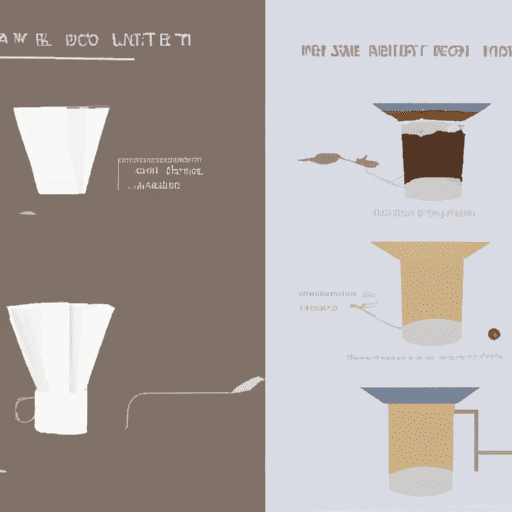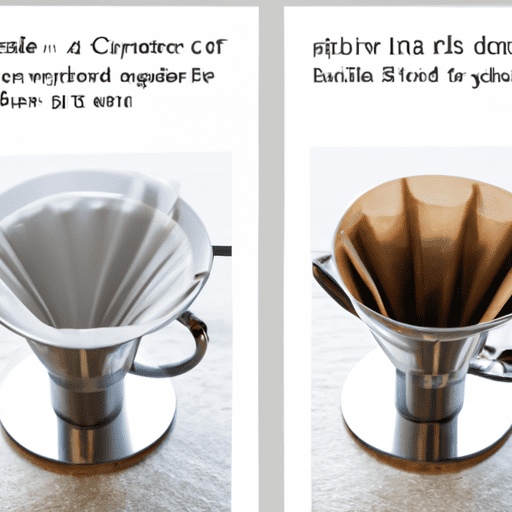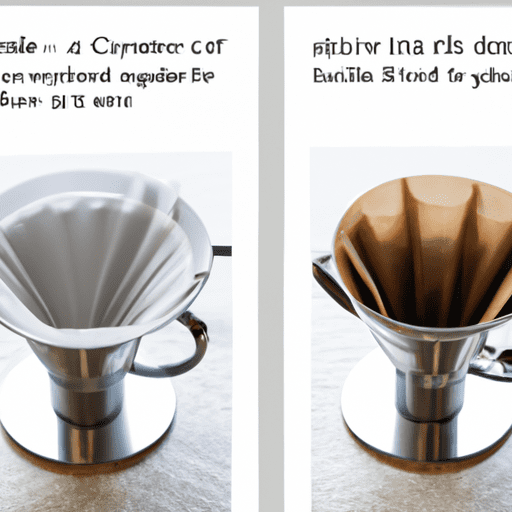Get ready, coffee enthusiasts! Today, you’re stepping into the fascinating world of pour over coffee which has been stirring a sobriety storm among baristas and coffee lovers alike. With both paper and metal filters gathering substantial followings, you might be wondering; which one brews the perfect cup? In this article, you’ll discover the unique characteristics of both filter types, and understand how they influence the taste, aroma, and overall coffee experience. Drinking coffee has never been this exciting!

Brewing Method
Pour Over Coffee
Pour over coffee is a method that allows you to control every variable in the brewing process to create a cup that’s exactly suited to your preferences. You decide the temperature, steepening time and amount of coffee to create a concoction that matches your taste. It’s also great for specificity since you can choose which flavour notes you would like to amplify or reduce.
Filter Paper
When it comes to the brewing process, one of the primary choices you need to make is the filter. The filter paper is the most commonly used for pour over coffee. These are usually inexpensive, easy to use, and disposable. They allow you to brew coffee without any bits of coffee grounds ending up in your cup.
Metal
On the other hand, metal filters are durable and reusable, making them an environmentally friendly filtering option. Metal filters allow oils and small coffee particles to pass through into the coffee, which can contribute to a richer, fuller bodied brew.
Brewing Technique
Pour Over Coffee
The pour over brewing technique involves pouring water over and through the grounds to extract the coffee flavors into your cup or server. The water drains through the coffee and filter into a carafe or mug.
Filter Paper
With a filter paper, you will place it in a cone or other pour over brewer, add your coffee, then pour your hot water over it. The brewing technique requires the coffee to steep in the water for a period of time before it filters through.
Metal
Brewing with a metal filter follows the same technique however, since metal filters have larger holes, the water can flow through the coffee at a faster rate. This could mean a quicker brew time, but also means that grits have a greater chance of slipping through into your final cup.
Brewing Time
Filter Paper
A paper filter tends to absorb some of the water as it passes through, extending the overall brewing time. This results in an average brew time of about 3 to 4 minutes for a filter paper pour over, depending on the consistency of your grind and the temperature of your water.
Metal
With a metal filter, the liquid flows through more quickly which might shorten your brew time. The average brew time might be around 2 to 3 minutes. However, keep in mind that brewing too quickly can lead to under-extraction, which might turn your coffee sour.

Brewing Temperature
Filter Paper
Paper filters work best with slightly cooler water, somewhere around 195 to 205 degrees Fahrenheit. This can protect against over-extraction and maintain the delicate flavors of the coffee.
Metal
Metal filters can handle higher temperatures, usually between 205 to 210 degrees Fahrenheit. However, using water that’s too hot can lead to bitter flavors, so experiment to find the best temperature for your taste.
Aroma
Filter Paper
Filter paper usually produces a clean and delicate aroma. It tends to trap and absorb some of the coffee oils, meaning it could potentially reduce the aroma of your coffee. However, the aroma of a paper filter brew is often described as bright and vibrant.
Metal
Metal filters, on the other hand, let more oils pass through, and these oils carry a lot of aromatic compounds. Therefore, coffee brewed with a metal filter might have a more robust and intense aroma.
Flavor
Filter Paper
A paper filtered coffee generally has a very clean, crisp taste, with bright acidity and clear flavors. This is because the paper absorbs most of the coffee’s oils and traps the fine sediment.
Metal
Metal filter yields a coffee with more body and richness due to the presence of natural oils and fine coffee particles in the final cup. These flavors can add depth and complexity, but could also cloud subtler flavor notes.
Body
Filter Paper
Filter paper offers a brew with a lighter body. The paper absorbs some of the coffee’s oils and filters out the fine sediment, leaving you with a cup that’s light-bodied and free from solids.
Metal
Metal filters, due to their larger holes, let more oils and very fine coffee grounds to pass through. This generally leads to a final cup that is thicker, richer and has a heavier body.
Clarity
Filter Paper
Using a paper filter guarantees you the cleanest cup of coffee possible. Since the filter paper traps more of the colloids (the tiny particles) in the coffee, your final brew is clearer and with highly defined flavors.
Metal
Metal filters have slightly larger perforations which allows some fine particles to pass through. This can lead to a slightly cloudier brew.
Sediment
Filter Paper
Paper filters offer the big advantage of filtering out pretty much all sediment. You won’t find coffee particles in the bottom of your cup when you use a paper filter.
Metal
As metal filters have larger holes, they inevitably allow some fine particles to slip through into your cup, meaning your coffee may contain a bit of sediment.
Durability
Filter Paper
Paper filters are disposable, so there’s no longevity potential here. They are not designed to be durable as you use them once and throw them away.
Metal
Metal filters are the more sustainable and durable option, as they are able to be reused for years if maintained correctly. They do require regular cleaning, but good care can ensure they last a long time.
